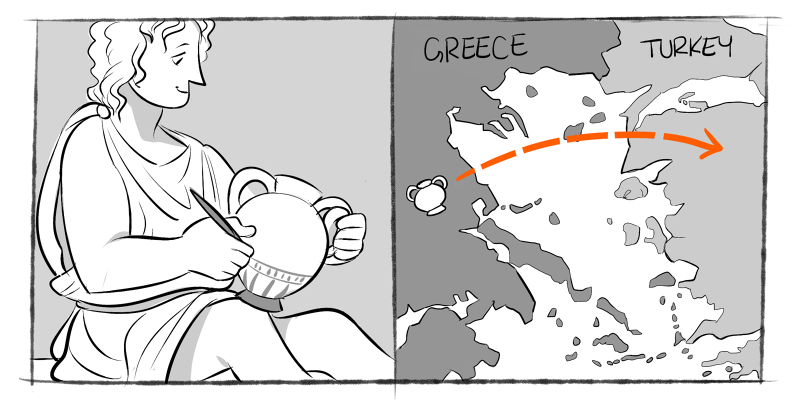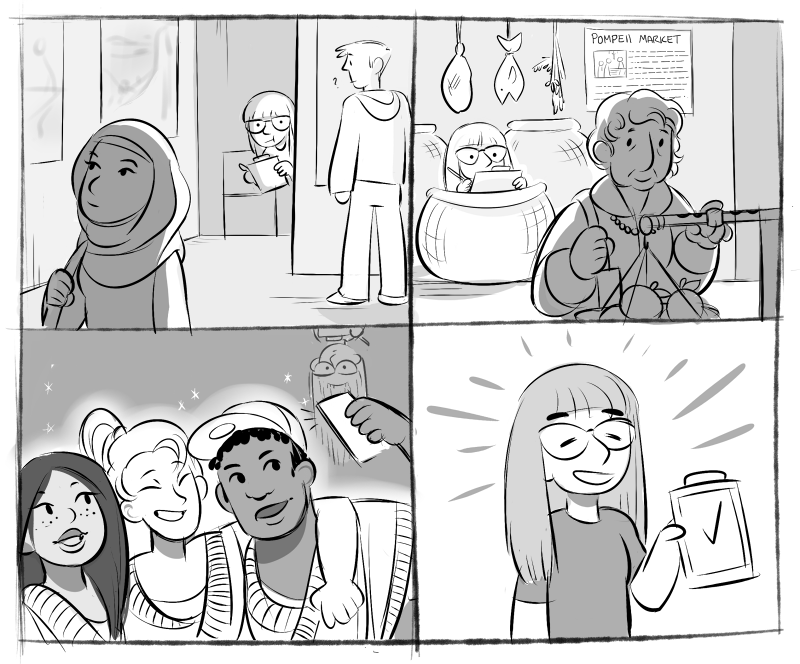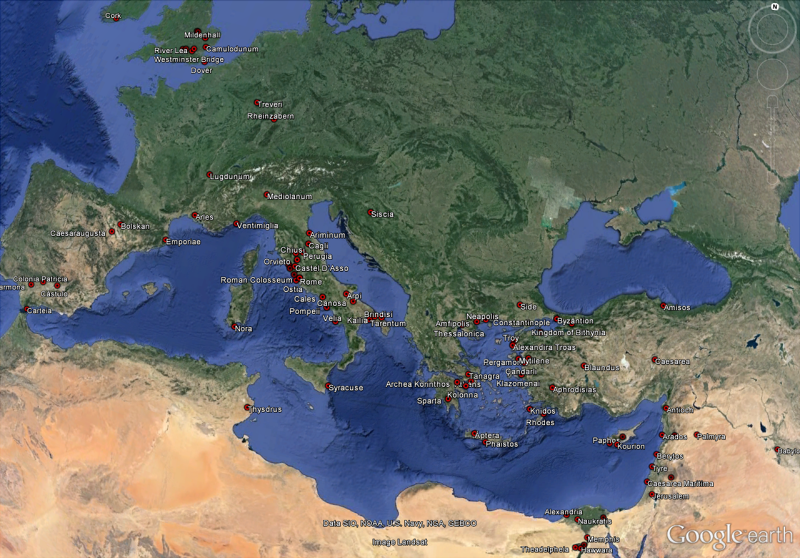Working in a museum has always been a dream of mine, and a challenge to work towards. In fact, it’s what inspired me to do a double major in Anthropology and History at the University of Toronto. So when I received the news that my ‘Internship in History’ placement was for the Royal Ontario Museum, I was ecstatic! I couldn’t wait to get started.
Going into the internship I knew I would be helping the World Cultures department to prepare for the big switch to a new database system. My first day was supposed to be a gentle introduction to the catalogue system, but as I would find out, my first task was anything but easy…
After a basic orientation of the staff area, I leapt into database work. Aided by the book “Excavations at Sabratha 1948-1951”, I was instructed to decode a previous cataloguer’s comments, and make the entries ready for the ROM site. I found that I was quickly overwhelmed, since the system the commenter used was jumbled and without page numbers – making the artifacts hard to locate within the book. Luckily, this wasn’t my main assignment, and more so an introduction to the system while my main work was being prepared. What an introduction!
I learned later that my main assignment is to find co-ordinates of archaeological sites where artifacts have been found and/or made. The co-ordinates will be uploaded to the new system, where they can be projected onto a Google Earth map to showcase all the locations. Once the map goes live on the ROM website, viewers will be able to click on these dots to learn more information about the site, artifacts, and other neat tidbits. The end goal is to have as many dots as possible, to light up the map in a sea of information! This task was much more manageable and with each new point plotted, it became more and more exciting to see the map coming together.
 The challenge is to find the location of where the artifact was made – just because an artifact is found somewhere, does not mean that is where it originates. You can tell where/when an artifact is from based on the material, decorative marks, style, etc.
The challenge is to find the location of where the artifact was made – just because an artifact is found somewhere, does not mean that is where it originates. You can tell where/when an artifact is from based on the material, decorative marks, style, etc.
A few weeks into finding co-ordinates, I was also given the task of doing quality control on the new Pompeii exhibit. In an effort to change the pace of what a modern museum exhibit should be, the ROM implemented many new interactive stations in order to give visitors a more “hands on” experience. Unlike other museums which shun photography, the Pompeii exhibit endorses them. Especially with the “Try on a Toga” or “Become a Gladiator” stations. It is then up to staff and volunteers to document any wear and tear of the stations, and to see how people are enjoying them.
As an Anthropologist, I quite enjoy doing these checkups. Part quality control but also part ethnographic study, it’s interesting to see how long people stay at each station, how much they interact with it, and whether they use the station for its intended use. While doing my check-ups, most people don’t notice my frantic note taking, but those who do shoot me a quick thumbs up or they tell me how much they enjoy the station. Parents in particular are quite fond of the new interactive stations, as it gives their kids a new way to be excited about ancient history.

Any likeness to the people in the comic is a coincidence. Also my skills of being inconspicuous aren’t that great.
My experience with the ROM so far has been extremely informational, and I really love getting to know the ins and outs of the operation. Even though I’m limited to particular jobs as an intern, I’ve never felt like my efforts weren’t appreciated. It feels like everyone has a role in putting on a great exhibition, and I couldn’t be more grateful to be part of that.

Progress! Many of the sites repeat, so I have to go through and find unique sites, and update the entry to be web ready.
